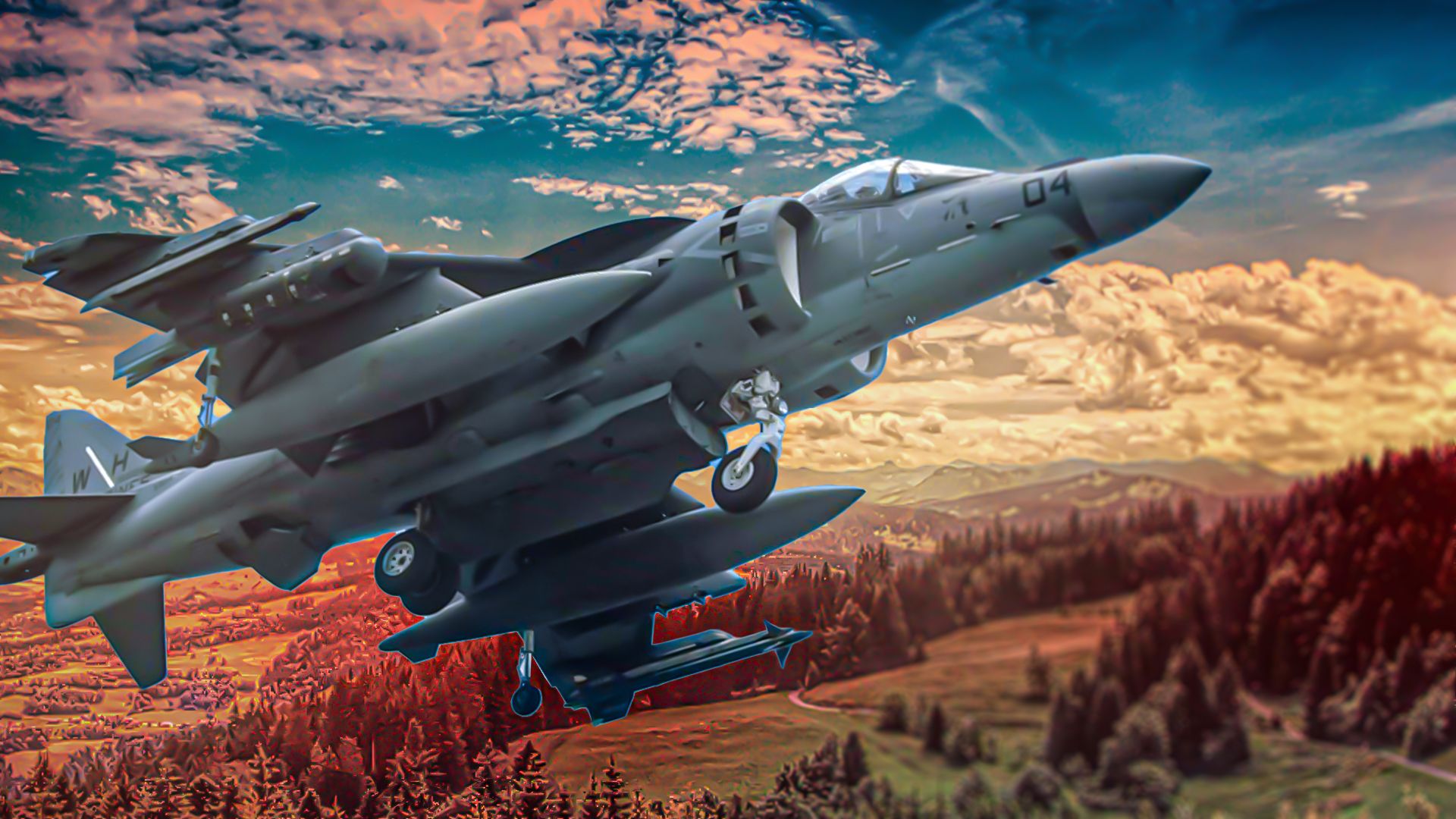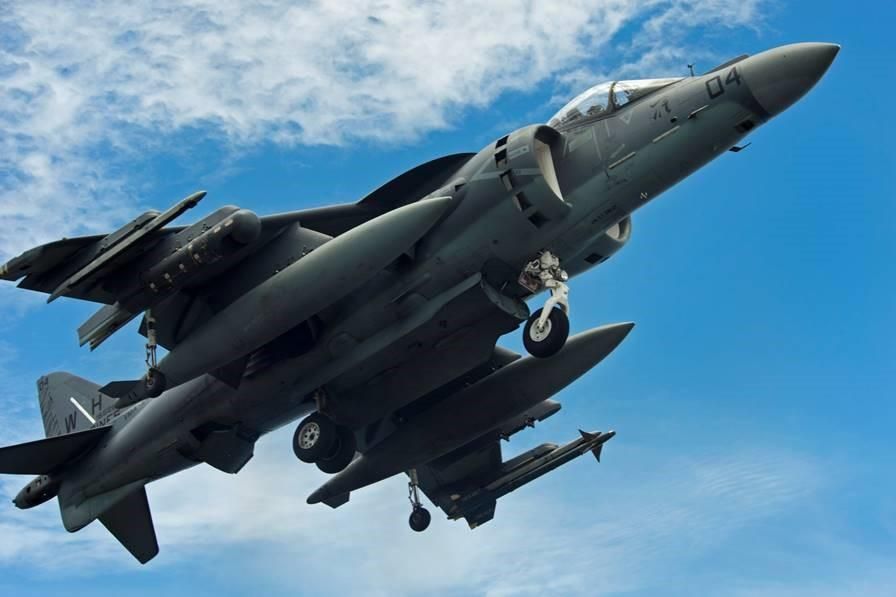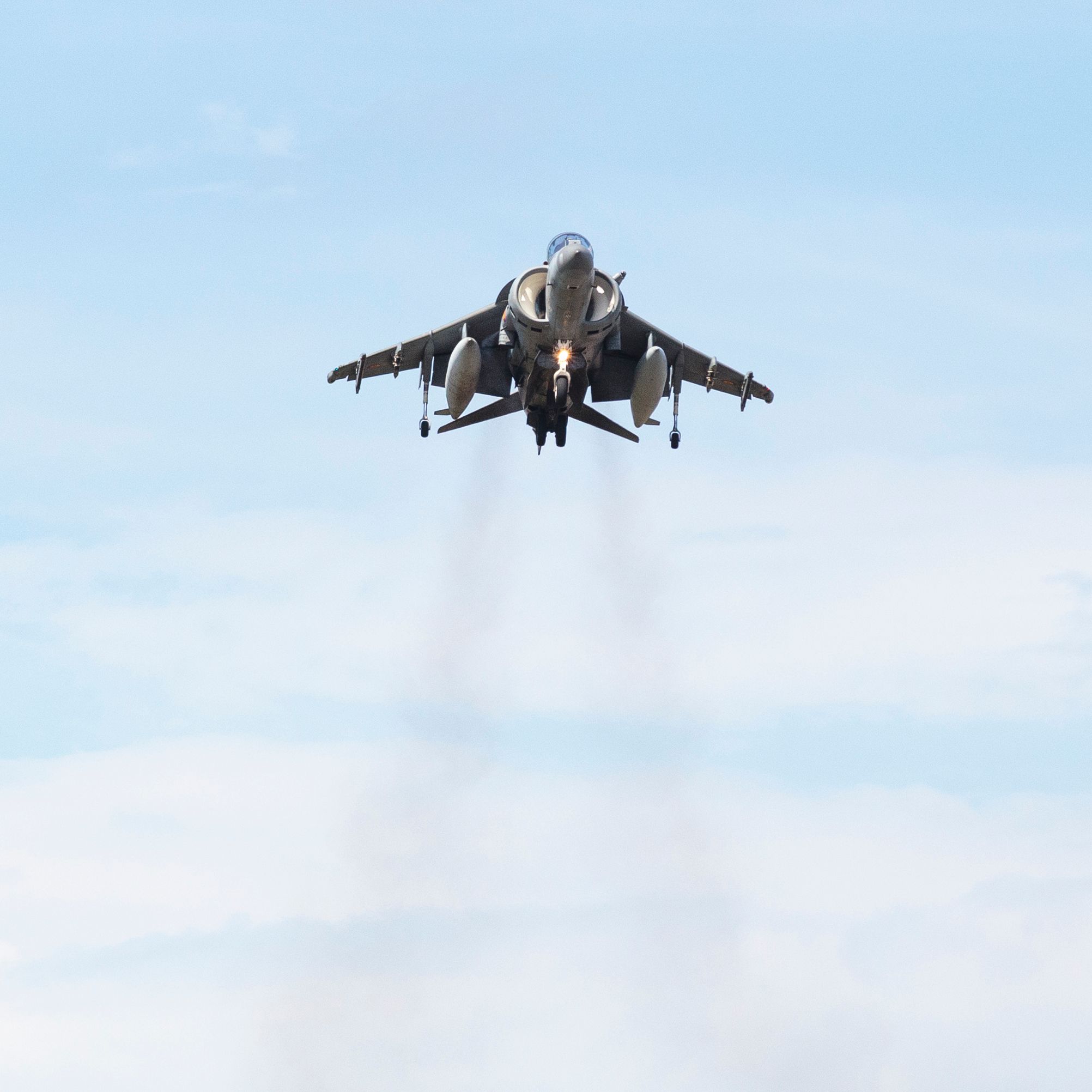Summary
- The McDonnell Douglas AV-8B Harrier II is a successful V/STOL military warplane used by the US Marine Corps.
- The Harrier II played a significant role in Operation Desert Storm and is still used by Spain and Italy.
- The USMC plans to fully transition to the Lockheed Martin F-35B aircraft by 2026, marking the end of the Harrier II’s era.
The time-honored McDonnell Douglas AV-8B Harrier II “jump jet,” one of the most successful (arguably THE most successful) vertical and/or short take-off and landing (V/STOL) military warplanes of all time, and a living legend within the US Marine Corps (USMC) aviation community.
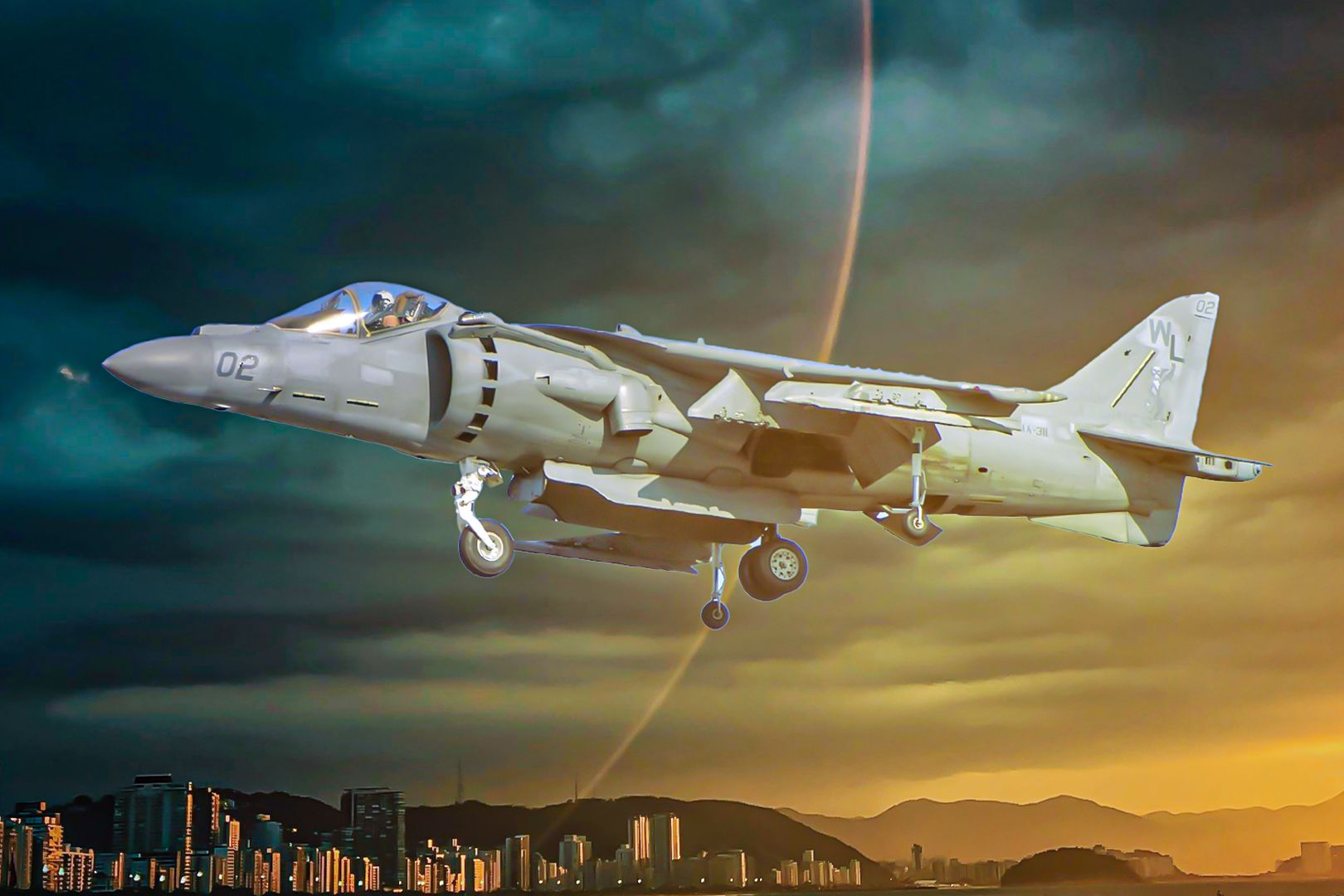
Related
Is The AV-8B Harrier II V/STOL Still In Service With The US Marine Corps?
The US Marine Corps plans to phase out its existing AV-8B Harriers by 2026.
As much as the Harrier has lived up to the Corps’ motto of “Semper Fidelis (Always Faithful),” nothing lasts forever. Simple Flying now looks at the Harrier II’s future as well as some interesting past & present facts about this venerable warbird.
5
It’s a movie star
Flown by “The Governator,” no less
“Okay, Marines, now it’s time to kick *ss…”
–Agent Harry Tasker (Arnold Schwarzenegger) in “True Lies” (1994)
All right, so we’re not actually talking about a movie from “The Terminator” franchise, and it was made nine years before Schwarzenegger was elected Governor of California, but one reason to love “True Lies” is the role the Harrier plays in the movie. I was already a fan of the Harrier jump jet long before I saw “True Lies” for the first time, but its performance in this movie boosted my love for the Harrier that much more.
Naturally, Hollywood being Hollywood, the movie heavily embellishes the true capabilities of the Harrier, as Tory Rich noted in a March 2021 article in The National Interest. However, despite its aviation inaccuracies, the film was quite well received by the Marine Corps. In 1993, Spy Culture quoted then-Major Jerry Broeckert of the USMC Public Affairs Office as saying:
“Although the screenplay does not allow for the demonstration of the aircraft’s close air support mission, it does demonstrate the maneuverability capabilities of the aircraft and the professionalism of Marine aviators; the potential recruiting impact with Arnold as the hero as a Marine Harrier pilot is unlimited.”
4
British ancestry
The first Harrier was built “across the pond”
More specifically, the first generation Harrier jump jet was manufactured by Hawker Siddeley (now BAE Systems), founded in 1934 and responsible for such famous warbirds as the Hawker Hurricane (the co-hero of the Battle of Britain along with the Supermarine Spitfire), the Avro Canada CF-100 Canuck (only Canadian-designed fighter to enter mass production), and the CF-105 Arrow.
That original Harrier made its maiden flight in 1967 and entered official service with the Royal Air Force (RAF) in 1969, thus making history as the first operational V/STOL warplane. It soon spawned a Royal Navy (RN) Fleet Air Arm variant, the Sea Harrier, which immortalized itself during the 1982 Falklands War between Great Britain and Argentina (the latter of whom prefer to call it “La Guerra de Malvinas“).
As I noted in an article published in The National Interest this January, in that conflict, Fleet Air Arm Sea Harriers amassed an amazing 23:0 air-to-air kill ratio against their Argentine Air Force adversaries, thus ranking it with the Sukhoi Su-27 Flanker (6:0 kill ratio) and F-15 Eagle (a mind-boggling 104:0 kill ratio) that are undefeated in air-to-air combat.
The USMC adopted the first-generation Harrier, which they dubbed the AV-8A, in January 1971. Ten years later, the AV-8B, concurrently built by McDonnell Douglas (now Boeing) for the USMC and by British Aerospace for Her Majesty’s Forces, made its maiden flight. Four years afterward, the Marines adopted it, and soon enough, the second-generation Harrier would become a legend in its own right.
McDonnell Douglas merged with Boeing in 1997.
3
Harrier II, the desert warrior
As in Operation Desert Storm, that is
Six years after the adoption of the Harrier II by the Marine Corps during Desert Storm, i.e., the 1991 Persian Gulf War against the regime of the late Saddam Hussein during the Iraqi occupation of Kuwait, the Harrier II established its own superb fighting reputation. As noted by the Naval Air Systems Command (NAVAIR) official info page:
“Operation Desert Storm in 1991 was highlighted by expeditionary air operations performed by the AV-8B. The Harrier II was the first Marine Corps tactical strike platform to arrive in theater, and subsequently operated from various basing postures. Three squadrons, totaling 60 aircraft, and one six-aircraft detachment operated ashore from an expeditionary airfield, while one squadron of 20 aircraft operated from a sea platform. During the ground war, AV-8Bs were based as close as 35 nautical miles (40.22 miles) from the Kuwait border, making them the most forward deployed tactical strike aircraft in theater. The AV-8B flew 3,380 sorties for a total of 4,083 flight hours while maintaining a mission capable rate in excess of 90 percent. Average turnaround time during the ground war surge rate flight operations was 23 minutes.”
2
Not retired yet
The Harrier II’s illustrious Marine Corps career continues
2024 marks 33 years since Operation Desert Storm and 39 years since the USMC adopted the AV-8B, which shows that the venerable warbird is no spring chicken.
Photo: Kentaylordesign / Shutterstock
Quite frankly, I was under the impression that the Marines had already fully retired the Harrier II, but it turns out this isn’t quite the case.
As noted by Dr. Omar Memon’s Simple Flying article that I linked to at the beginning of this piece:
“The Marine Corps operates 87 AV-8Bs and 12 TAV-8B trainer aircraft. Several fighter squadrons operate a fleet of decades-old jets. The USMC aims to fully transition to the Lockheed Martin F-35B aircraft by 2026…In April, the 2nd Marine Aircraft Wing reported that the final two AV-8B Harrier II pilots, Captain Joshua Corbett and Captain Sven Jorgensen, completed their training, receiving the last 7509 military occupational specialty designation reserved for qualified pilots of the aircraft.”
T-minus two years and counting for the Harrier II’s retirement. However, given the global tensions with Russia and China and the grim possibility of war, this venerable jump jet may yet get one more US deployment to battle.
1
Still hanging tough overseas
Two European nations also still use the AV-8B
Namely, the Spanish Naval Air Arm (Flotilla de Aeronaves de la Armada [FLOAN]) and Italian Naval Aviation (Aviazione Navale).
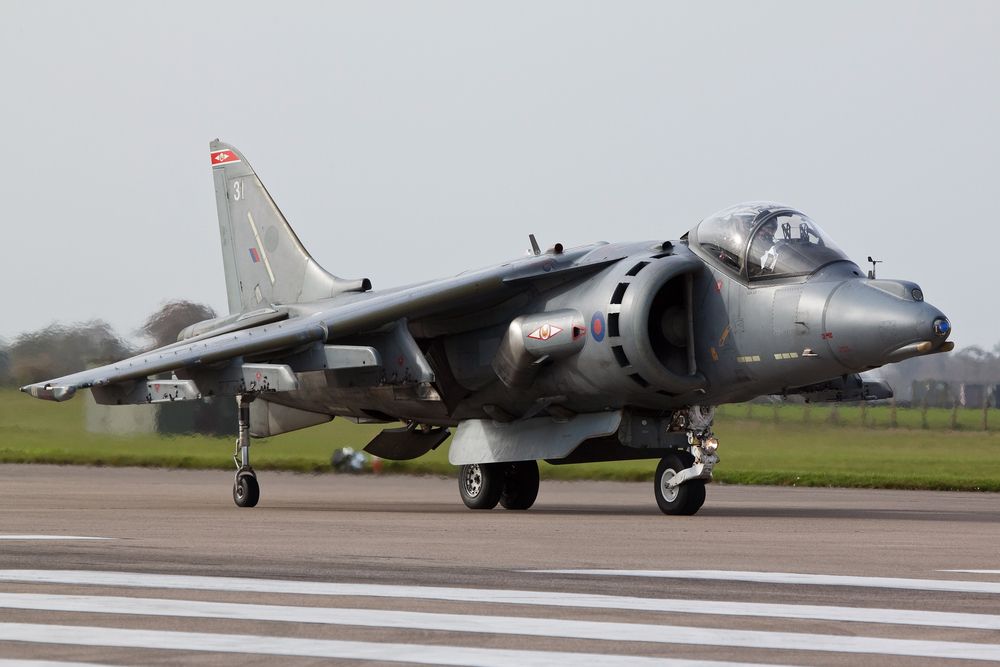
Related
Do Any Air Forces Still Use The Hawker Harrier Jet?
The versatile multi-role fighter aircraft is being phased out but will be around until 2030.
The Italians will beat the USMC to the punch by one year, as they plan to retire their remaining 15 Harrier IIs sometime next year. This would leave the Spaniards as the last Harrier holdouts. Spain is slated to keep its remaining dozen AV-8Bs in service all the way to 2030! Just like with the US Marines, these two NATO nations’ naval air components have the F-35 on deck as the Harrier’s replacement. The Italian and Spanish Harriers have served since 1991 and 1988, respectively.
Regarding Spain’s prolonged transition from the Harrier II to the Lightning II, Captain José Emilio Regodón Gómez was quoted as saying in October 2023 by Aviacionline Defensa:
“‘Losing the embarked fixed wing would be a step backward in our level of ambition. Today, as demonstrated for example in the ‘Dédalo-23’ deployment, the LHD Juan Carlos I can be operating anywhere in the Atlantic or the Mediterranean, and its aircraft can offer CAP (combat air patrol) to the naval force, support our Marines in their landings, combine their firepower with those of surface or submarine units for coordinated attacks on other enemy naval forces, or attack targets thousands of kilometers inland. Such strategic flexibility is provided only by an embarked fixed-wing jet air wing.'”

